Day 2: Himeiji
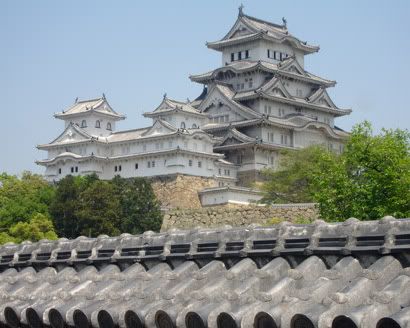
Our second day of fun-filled Japanification found us wandering ‘Hime no Michi’, the Princess’ Road, from which the name Himeji is derived. Himeji-jo (Castle) is one of my favorite places in Japan, so I counldnt wait for and excuse to go back! Thankfully it was on Vicki`s list!

Gracefully rising above the city like a white heron about to take flight, it is often called Shirasagijo, or White Heron Castle. Like all Japanese Castles, it was built entirely of wood (360 tons of it), so the white plaster that covers its walls serves to protect it from fire. Amazingly, it has never known nither fire nor battle in all its centuries of existence. It is the finest surviving example of Japanese Castle architecture, dating back to the 17th century and including 83 structures, all with highly developed, ingenious systems from the dawn of the Shogunate.
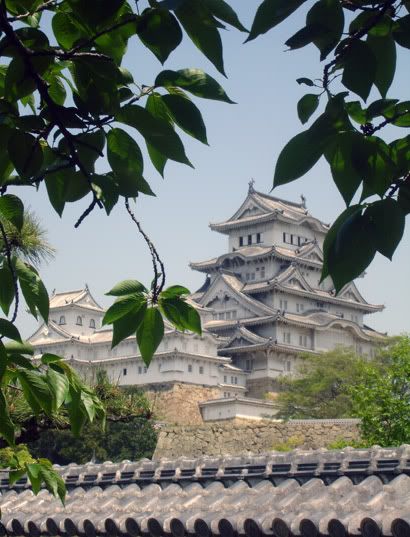
In 1601, the son-in-law of Tokugawa Ieyasu (then ruler of Japan) began building the castle, which took nine years to complete. The architects of Himeji employed contemporary castle technology to make Himeji practically impenetrable. Its labyrinth of gates and spiraling baileys were designed to confuse enemy soldiers. Entering the main gate, the closer you get to the main tower, the farther away it appears. Even today, with the tourist routes clearly marked, many visitors get lost. Of course that does not apply to Vicki and I!

Fifteen-meter sloping stone walls made it impossible for an approaching enemy to view the castle its from the base, and wandering passages were intended to confuse enemies unfamiliar with the castle's layout. All 84 gates are heavily fortified by wood and stone, and small enough to make moving many men through at one time difficult. Openings (ishiotoshi) in the walls of the main complex allowed those within the castle to throw stones and scalding water or hot oil on their attackers, while rifles and arrows could be shot thru other holes (sama).

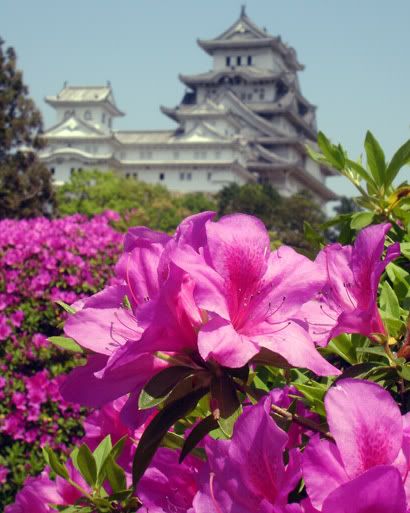
The castle was built for war, but its beauty is undeniable.

The integration of nature and technology in Himeji Castle created a physical and psychological barrier designed to confuse and exhaust an enemy, but it is that same design that intrigues and enchants me. How could something so beautiful, built in perfect harmony with its natural surroundings, be used for war?


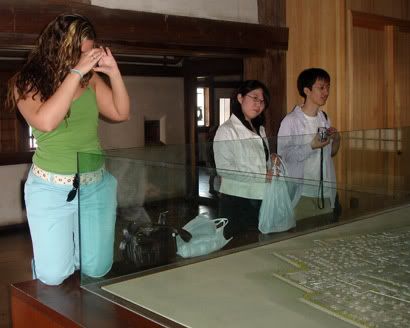
Can you spot the Gaijin?


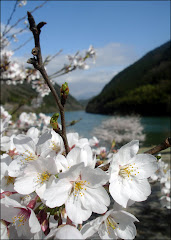

3 comments:
Wow. Aomori-ken only has one castle, in Hirosaki, and it burned down a couple of centuries ago. All that's left is the gatehouse. Needless to say, I envy those places that still have their castle complexes complete and intact.
Ah yes...A common case of castle envy. When I first got to Ena, everyone told me about the little castle town Iwamura, just minutes away. They, along with the many castle iconned street signs saying, `Iwamura, castle town, this way` led me to believe that there might actually be a castle there(how did I come to that conclustion?).
But after hiking up to where the castle was supposed to be, i found only a wall, made to look like a castle, but not a castle at all! Just a wall! I guess there was a castle there back in the day, but come on! Let it go! Theres gotta be something else they can use as their claim to fame! Maybe the fact that they eat baby bees? Its just a suggestion.
Any of that goin` on up in Aomori (the baby bee eating, I mean).
you have many interesting photos from japan...it's too bad that i can't go there...keep going to post photos from japan ! i will return to your website...
Post a Comment